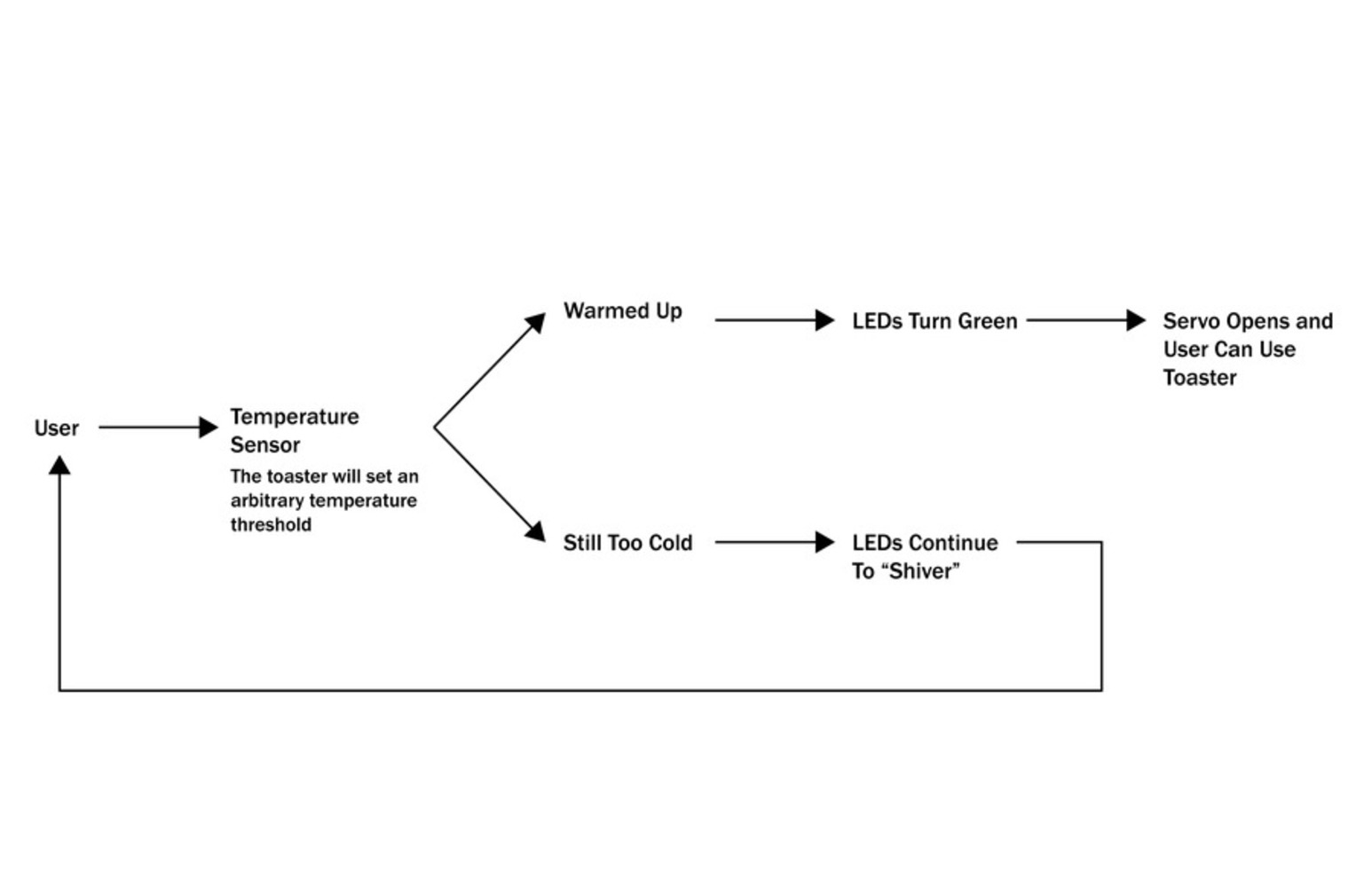Intention
My initial goal with the Chilly Toaster was to create an understanding of how we are expected to interface with our appliances, and what happens when those understandings change. I decided to question this by creating a toaster that needs to be heated up in order to work, a confusing concept when a toaster is a device that we expect to heat up things on its own. The intention is to give the toaster a sense of what it means to be cold or warm, much like humans, but also some machines (i.e. cars need to be heated up in the winter). The intention was that the toaster would not function unless it was satisfied with how warm it feels. In addition to having the toaster express itself through the LED strip, I wanted the toaster to be able to have some agency over whether or not it will actually work. For the LED, I wanted this to be an indicator to the user of how the toaster “felt”. The colors and animations on the LEDs would reflect this.
